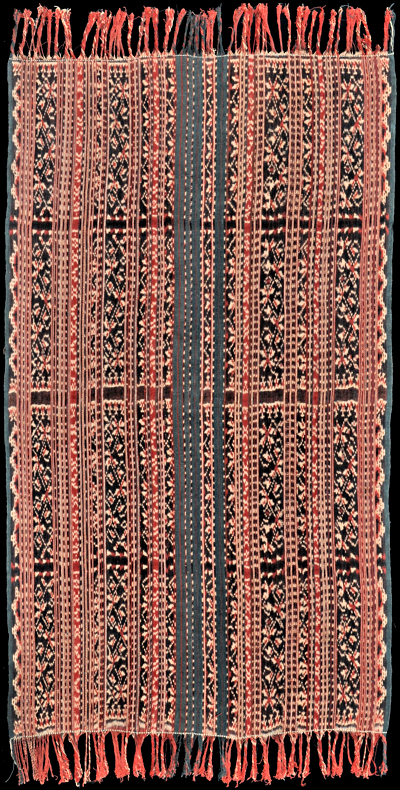| |
 
 | | | |
006 Roti Group, Ndao
Blanket  
| | | Period: | 1920-40 | | Yarn: | Cotton, hand-spun, coarse | | Technique: | Warp ikat | | Panels: | 2 | | Size: | 106 x 190 cm (3' 5" x 6' 2") LW: 1.79 | | Design: | Narrow bands in brown, faded indigo and brick red. In its asymmetry shows the Savunese, rather than Rotinese visual influence that is a Ndao characteristic. The main motif is a truncated jilamprang, prerogative of the nobility. Truncating patterns is another Ndao characteristic. | | Comment: | Rather early 20th c. men's cloth from Ndao in hand-spun cotton and natural colours. The near-equal presence of morinda and indigo, similar to that in PC 008, has created a dark mauve overall tonality. The cloth has a pleasant well worn feel. | | Background: | Chapters on Roti Group and Ndao. | | Exhibited: | Museu do Oriente, Lisbon, 2014/15. | | Published: | Woven Languages, 2014.
Ikat from Timor and its Outer Islands, 2022. | | Compare: | 008 125 234 290 | | Sources: | Cf. Buehler, Patola Influences, Plate 22. Also Gittinger, ed., Indonesian Textiles, Fig. 7. On the Savunese style field division as characteristic of Ndao versus Roti see Fox In Gittinger, Indonesian Textiles, p.48 | | |

©Peter ten Hoopen, 2025
All rights reserved.
|
|


